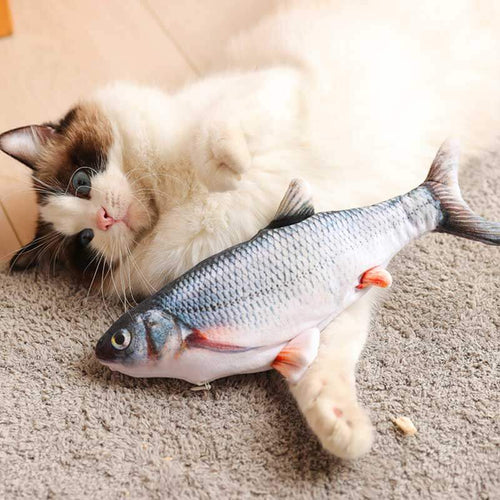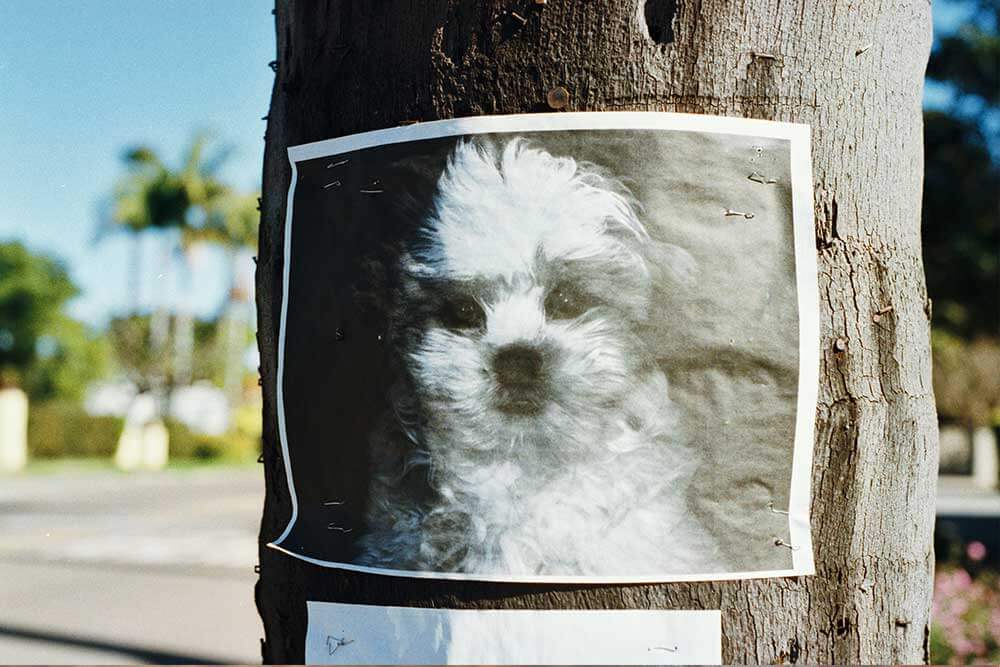Have you ever wondered about the mystical perspective of the feline gaze? Do they perceive the same vibrant hues as we do, or is their reality painted in shades of black and white? How well can they navigate in the dark? Let's delve into the fascinating realm of cat vision to uncover these mysteries.
What Colors Can Cats See?
Cats see more than just black and gray. They can see a spectrum of colors, albeit not as vividly as humans. While they are capable of distinguishing various shades of blue, green, and yellow, colors on the red spectrum, such as red, orange, and brown, are imperceptible to their eyes. Hues on the red scale may resemble shades of green or blue to them.
Understanding Feline Vision
But how do cats see colors? Similar to humans, cats have two types of photoreceptor cells in their retinas: rods and cones. Rods help with night and peripheral vision, detecting brightness and shades of gray. Cones enable daylight vision and color perception, each sensitive to different wavelengths of light.
Humans have three types of cones for detecting combinations of red, blue, and green, allowing for a broad spectrum of color perception. However, cats have only two cones. They lack sensitivity to red light and are more attuned to blue-violet and yellow-green wavelengths. Consequently, cats likely see in a palette resembling that of a color-blind human, characterized by subdued shades of blue, yellow, green, and gray, with red appearing closer to green in their eyes. Therefore, when your feline friend eagerly chases a laser pointer, they're not fixated on its color but rather responding to its swift movements.
Cats have a tenth of the cones that humans do, making them less sensitive to changes in brightness, so they can't see colors in the same vivid and lively way we can.
How Else Do Cats and Humans Differ in Their Vision?
In addition to color perception, cats and humans have other visual differences.
Cats Are Masters of Darkness
While they may not perceive the full spectrum of colors as vividly as humans do, they excel in low-light environments, thanks to their abundance of rod cells. With up to 6 times more rods than humans, cats require only a fraction of the light to see effectively, granting them unparalleled sensitivity and the ability to discern fast-moving objects with precision. In fact, cats process visual information at a staggering rate, approximately 5-6 times faster than humans, enabling them to perceive motion fluidly at 100 to 120 frames per second, compared to our 20 frames per second. To put it simply, cats' eyes operate at a speed roughly 5-6 times faster than those of humans. What does this mean? Well, imagine both a cat and a person watching an older-style television set simultaneously. While we would see a smooth, continuous image, cats would perceive the picture as slowly flickering before their eyes.

Furthermore, cats have a thin reflective layer called the tapetum lucidum, found behind the retina, which enhances their vision in dim conditions by amplifying incoming light. This layer not only contributes to the luminous, greenish glint often observed in a cat's eyes at night but also creates better vision in dim settings.
But their ability to see in the dark goes even further. Cats' pupils have extraordinary flexibility, expanding by up to 135 times their original size in darkness—far surpassing the capability of human pupils, which expand only 15-fold. This remarkable expansion enables cats to navigate near-darkness effortlessly. Additionally, their slit-shaped pupils allow them to facilitate depth perception crucial for hunting.
Cats Are Nearsighted
While humans typically have 20/20 vision—meaning we can see clearly at 20 feet what an average person can see at 20 feet—cats have a visual acuity ranging from 20/100 to 20/200. In simpler terms, if we can see something clearly from 100 to 200 feet away, cats need to be much closer, about 20 feet, to see the same thing. This nearsightedness explains why cats excel at sneaking up on their prey—they're better at seeing things up close rather than far away.
So why are cats nearsighted? It seems they lack the eye muscles needed to adjust their lens shape for better focus, limiting their clear vision to within 1 to 20 feet. Additionally, their abundance of light-sensitive rods in the retina helps them see in the dark but may reduce their overall visual sharpness in bright light.
Now, here's the intriguing part: if cats can't focus on objects closer than 1 foot, how do they see up close? The answer lies in their whiskers. Amazingly, high-speed cameras have shown that when an object is too close for clear sight, a cat's whiskers automatically form a basket shape around its mouth and nose, helping it accurately pinpoint the object's location.
Cats Have A Large Visual Field
The visual field refers to what can be seen when focusing on one point, including what's straight ahead and around us. Cats have a wider field than humans because their eyes are on the sides of their head. While humans see about 180°, cats see around 200°. Even though cats' binocular vision (overlap between their eyes' views) is narrower than ours, their wide field helps them see not only to the sides but also diagonally behind them. It's like how widescreen phones show more on the sides. This broad view helps cats spot threats or interesting things from different angles.
How Does This Affect Cats?
While they may not perceive colors as vividly as humans or see distant objects as clearly, cats excel in other areas. Their wider field of vision surpasses that of humans, and their exceptional night vision allows them to detect motion in the dark with ease. Moreover, cats rely on their acute hearing and keen sense of smell to compensate for any visual limitations.
Understanding what your cat can see can guide your choices as a pet owner. Consider their color preferences when selecting toys—opting for yellow and blue options over red ones, or choosing interactive toys that tap into their natural hunting instincts. To capture their full attention, position yourself directly in front of them, where their visual acuity is greatest. And next time you spot a rainbow in the sky, know that your cat can appreciate it too, albeit in a limited capacity. While they may not perceive all the colors, catching a glimpse of yellow and blue will suffice. After all, it's the little joys that matter most to our feline friends
How Can I Help Improve My Cat's Vision?
Whether indoors or outdoors, your cat relies on its vision for survival and a fulfilling life. Even indoor cats, spared from hunting for food, still need sharp vision to navigate their surroundings effectively.
Vision Nutrition
Ensuring your cat's diet includes essential nutrients is crucial for their vision health. Taurine, an amino acid vital for eye health, must be provided through diet since cats can't produce it on their own. Foods such as fish and meats are rich sources of taurine. Its absence can lead to deteriorating vision over time, so make sure your cat's meals are taurine-rich. Additionally, vitamins like A, omega-3 fatty acids, and antioxidants contribute to healthy eyes. Look for cat food with an AAFCO statement guaranteeing these nutrients.
Engaging Sight Exercises
Keeping your cat mentally and physically engaged supports their vision health. Fun activities like reflex games, toys, or chasing a laser pointer provide exercise while stimulating their vision. Even though cats can't see the color red, moving lights from laser toys keep their eyes active and enhance their overall well-being.
Consistent Eye Care
Maintaining clean eyes is essential for your cat's health. While cats groom themselves, they can't clean every part, so regular eye cleaning is necessary. Using a warm washcloth or cotton balls dipped in warm water, gently wipe away any discharge from the eyes. Use separate cotton balls for each eye to prevent the spread of any infections.
Yearly Veterinary Check-ups
Regular check-ups with your veterinarian are crucial for monitoring your cat's eye health. During these exams, your vet will look for any signs of trouble like redness, cloudiness, or unusual discharge. Catching issues early can prevent vision loss or allow for timely treatment, ensuring your cat enjoys optimal vision for years to come.
FAQ (People Also Ask)
1. What Colors Can Cats See?
Cats mainly perceive muted shades of blue-violet and yellow-green but can't distinguish red, orange, or brown.
2. Can Cats Differentiate Between Shades of Blue and Green?
Cats can differentiate between certain shades of blue, but whether they discern various shades of green is still debated among scientists.
3. Do Cats See the Same Colors as Dogs?
Both cats and dogs have limited color perception and struggle with red hues. However, cats may perceive more blue and greenish-yellow shades, whereas dogs focus more on blue and yellow.
4. Does Cat Color Vision Influence Their Behavior?
Cats rely more on detecting movement and seeing in low light rather than color vision when navigating their environment.
5. Can Cats See in the Dark?
Although cats lack night vision, they can see better in dim light compared to humans.
6. Can Specific Colors Attract a Cat's Attention?
Cats may show more interest in blue and greenish-yellow toys over red ones. However, standing directly in front of them, where their vision is strongest, is the most effective way to grab their attention.




























